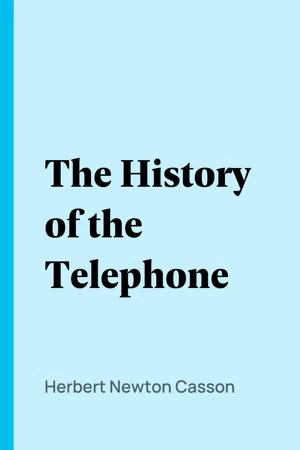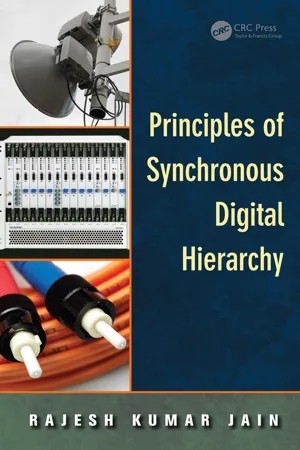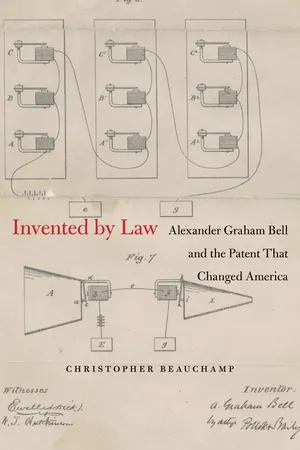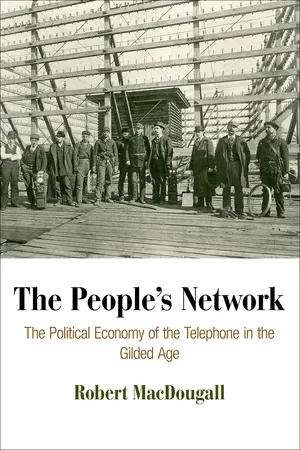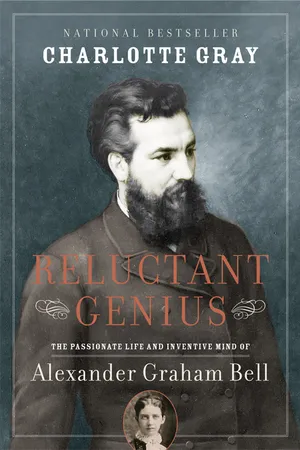Technology & Engineering
Alexander Graham Bell
Alexander Graham Bell was a Scottish-born inventor and scientist who is credited with inventing the first practical telephone. He also made significant contributions to the development of the photophone, an early device for transmitting sound on a beam of light, and worked on numerous other inventions throughout his career.
Written by Perlego with AI-assistance
11 Key excerpts on "Alexander Graham Bell"
- eBook - ePub
Power, Speed, and Form
Engineers and the Making of the Twentieth Century
- David P. Billington, David P. Billington Jr.(Authors)
- 2013(Publication Date)
- Princeton University Press(Publisher)
CHAPTER THREE Bell and the TelephoneA s Edison was beginning his work at Menlo Park, the telephone made its first public appearance at the Philadelphia Centennial Fair on June 25, 1876. Its inventor, Alexander Graham Bell, envisioned a network of telephones that would enable any person to reach any other person in the world instantly. Bell’s ambition has yet to be fully realized but in the twentieth century the telephone became indispensable to daily life in the United States. Before the phone, voice communication was limited to distances measured in feet. Telegraph messages traveled longer distances but had to be encoded and decoded by operators at each end. With a telephone, communication was direct, and no place on the network was more than a simple phone call from any other place on it.Bell did not set out to invent a telephone; his original goal was to invent a better telegraph. But he soon realized that his approach to telegraphy might make voice communication possible. After patenting his telephone and then demonstrating it, he formed a company to provide telephone service and then retired from the business. As the network grew, it encountered technical difficulties, principally the attenuation or weakening of calls over longer distances. To overcome this challenge, the Bell System turned to more scientifically trained engineers, who achieved long-distance telephony and met the growing need for carrying capacity as the number of telephone subscribers grew.Bell to BostonBorn in Edinburgh, Scotland, Alexander Graham Bell (1847–1922) grew up with the ambition to follow the profession of his father, Alexander Melville Bell (1819–1905), a well-known speech teacher at the University of Edinburgh.1 Melville Bell’s invention of “visible speech” taught deaf people how to communicate vocally (figure 3.1a and b ).2 Using this approach, his three sons worked with him as teachers of the deaf. The middle son, Alexander Graham, also took an interest in the mechanics of sound. He found that he could produce vowel sounds with tuning forks, and he learned of an experiment in which the German scientist Hermann von Helmholtz had used the magnetic field of an electric current to resonate tuning forks. Bell mistakenly believed Helmholtz had demonstrated that sound could be carried by electricity. But the misunderstanding encouraged Bell to pursue the idea that speech might be carried by an electric current.3 - eBook - ePub
- Herbert Newton Casson(Author)
- 1997(Publication Date)
- Perlego(Publisher)
That twang of the clock-spring was the first tiny cry of the newborn telephone, uttered in the clanging din of a machine-shop and happily heard by a man whose ear had been trained to recognize the strange voice of the little newcomer. There, amidst flying belts and jarring wheels, the baby telephone was born, as feeble and helpless as any other baby, and "with no language but a cry."The professor-inventor, who had thus rescued the tiny foundling of science, was a young Scottish American. His name, now known as widely as the telephone itself, was Alexander Graham Bell. He was a teacher of acoustics and a student of electricity, possibly the only man in his generation who was able to focus a knowledge of both subjects upon the problem of the telephone. To other men that exceedingly faint sound would have been as inaudible as silence itself; but to Bell it was a thunder-clap. It was a dream come true. It was an impossible thing which had in a flash become so easy that he could scarcely believe it. Here, without the use of a battery, with no more electric current than that made by a couple of magnets, all the waves of a sound had been carried along a wire and changed back to sound at the farther end. It was absurd. It was incredible. It was something which neither wire nor electricity had been known to do before. But it was true.No discovery has ever been less accidental. It was the last link of a long chain of discoveries. It was the result of a persistent and deliberate search. Already, for half a year or longer, Bell had known the correct theory of the telephone; but he had not realized that the feeble undulatory current generated by a magnet was strong enough for the transmission of speech. He had been taught to undervalue the incredible efficiency of electricity.Not only was Bell himself a teacher of the laws of speech, so highly skilled that he was an instructor in Boston University. His father, also, his two brothers, his uncle, and his grandfather had taught the laws of speech in the universities of Edinburgh, Dublin, and London. For three generations the Bells had been professors of the science of talking. They had even helped to create that science by several inven-tions. The first of them, Alexander Bell, had invented a system for the correction of stammering and similar defects of speech. The second, Alexander Melville Bell, was the dean of British elocutionists, a man of creative brain and a most impressive facility of rhetoric. He was the author of a dozen text-books on the art of speaking correctly, and also of a most ingenious sign-language which he called "Visible Speech." Every letter in the alphabet of this language represented a certain action of the lips and tongue; so that a new method was provided for those who wished to learn foreign languages or to speak their own language more correctly. And the third of these speech-improving Bells, the inventor of the telephone, inherited the peculiar genius of his fathers, both inventive and rhetorical, to such a degree that as a boy he had constructed an artificial skull, from gutta-percha and India rubber, which, when enlivened by a blast of air from a hand-bellows, would actually pronounce several words in an almost human manner. - eBook - ePub
- Rajesh Kumar Jain(Author)
- 2018(Publication Date)
- CRC Press(Publisher)
The fascination with the telephone has increased exponentially throughout the world. Let us briefly review how the telephone was developed and what was its fundamental technology.
These were the words of Alexander Graham Bell to his assistant Mr. Watson that made history on March 10, 1876 on his invention of the telephone. Mr. Watson was in the next room.1.2 “Mr. Watson, Come Here. I Want to See You.”Although the invention of the telephone by Alexander Graham Bell and Elisha Gray was almost simultaneous, Bell won the patent rights after a long legal battle and is now accepted as its inventor.FIGURE 1.1Children’s communication through cotton thread.
Although the materials of the basic components have changed, the technology used by Bell in his first telephone is still in use today. The three basic components of a telephone are1.3 Technology of the Telephone(i) Transmitter or microphone(ii) Receiver or earpiece(iii) Metallic wireFigure 1.2 shows the principle.Let us have a brief look at how these components function.FIGURE 1.2The basic telephone technology. (If you are wondering why there is only one pair of wires, and why only transmitters are connected to each other and not the receivers, here is the answer. Although there is only one pair of wires connecting the two telephones, the transmitted voice is separated from the received voice by means of a circuit called “Hybrid.” When the voice is received by the telephone, Hybrid directs it to the receiver (or earpiece), and when the person speaks, the voice is guided to the transmitter by the Hybrid circuit.)1.3.1 TransmitterThe principle of operation of the transmitter is illustrated in Figure 1.3 .Fine carbon granules are filled between two carbon electrodes. One of the carbon electrodes is fixed, while the other is movable. An aluminum diaphragm is attached with the help of a soft rubber to the movable electrode. The movable electrode is suspended on thin mica flanges with the transmitter body. DC voltage is applied between the electrodes, which results in the flow of a DC current. - eBook - ePub
The Invention of Miracles
Language, Power, and Alexander Graham Bell's Quest to End Deafness
- Katie Booth(Author)
- 2021(Publication Date)
- Simon & Schuster(Publisher)
IPassage contains an image
Chapter 1
Mere voice is common to the brutes as man; Articulation marks the nobler race… —Alexander Bell, grandfather of Alexander Graham BellI n 1863, at age sixteen, Alexander Graham Bell first started work on his speaking machine. He planned to give the contraption a human form, and then to play this mechanical body like an organ, with keys that depressed the different portions of the tongue and lips, and a wind chest to exhale the full words they formed. Aleck imagined that his machine would have a human skull, eyes and a nose, and a wig for hair. But first he had to build its working parts, its insides. He acquired a human skull from the local apothecary and used it to create molds for the jaw, teeth, nasal cavity, and the roof of the mouth, and he got to work, trying to coax them to speak.In general this was a strange way for a teenager to spend his time, but in the Bell house Aleck fit right in. His father, Alexander Melville, known to his family simply as “Melville,” was an elocutionist who was designing a universal phonetic alphabet, one that would be able to document any sound in any language. Melville spent much of his time poised in front of a mirror in his study, sounding a single syllable over and over again as he studied the shape of his mouth. He filled notebooks with drawings of tongue positions and assigned symbols to each sound, each tongue position and lip position, each style of breathing. Melville had grand dreams for this work, but first he had to perfect it.Recently, Melville’s research had taken him from the Bells’ home in Edinburgh, Scotland, to London, with Aleck in tow. There, they visited an inventor named Charles Wheatstone. In Europe, Wheatstone was considered the father of the telegraph, which had entered the public imagination twenty years earlier. At Wheatstone’s home, Aleck encountered a machine that entranced him: a wooden box with a bellows at one end and a hole at each side. There was nothing humanlike about it; its appearance was not what Aleck himself would later aspire to, but it gripped him just the same. Wheatstone threaded both hands into the box and used his right elbow to press down on the bellows, giving the machine air. Whatever Wheatstone did inside the box, Aleck didn’t know; the mechanics were obscured by the box. Wheatstone operated the apparatus to utter a few sentences with its ducklike voice, and Aleck was delighted. As a parting gift, Wheatstone lent Melville the book by Baron Wolfgang von Kempelen that included the designs he’d used to build the machine. When they got back to Scotland, Melville challenged Aleck to build his own version of the machine with the help of his older brother, Melly. He wanted them to become a part of the family business, and he saw an opportunity now to stoke their interest. - eBook - ePub
- Christopher Beauchamp(Author)
- 2015(Publication Date)
- Harvard University Press(Publisher)
CHAPTER 2Acts of Invention
THE HISTORY OF THE TELEPHONE did not begin with an invention. Instead, it began when a small group of entrepreneurs, including Alexander Graham Bell, formed a company for the purpose of seeking improved methods of telegraph transmission. These men plunged into a race to develop sound-based electrical signals, a contest which led unexpectedly to the transmission of human speech. What happened next—the commercialization of the telephone as a disruptive stand-alone technology, independent of the telegraph—was not inevitable. Nor was it the result of visionary choices by an individual inventor. Instead, the fate of the new device depended heavily on the character of the Bell enterprise: a high-tech start-up whose strategies were driven by investor relations and the exploitation of patents.From the beginning, the inventive effort that produced voice transmission was conducted with the telegraph in mind. Telegraph technology was by far the most significant existing application of electricity in the mid-1870s, dwarfing the early research then going on into electric lighting and power. The telegraph business was dominated by Western Union, which had consolidated the major lines in the aftermath of the Civil War and in the process had become one of the largest corporations in the United States. Smaller specialized firms served the markets for private lines, printing telegraphs, stock reporting, and alarm services.1Within the ecology of telegraph companies and the machine shops that supplied them, patent rights held a prominent place. The centrality of patents was not entirely new, of course: Samuel Morse’s patent had helped to shape the telegraph business in its early stages. But the 1870s saw industry leaders embracing innovation as a business strategy and using patents systematically to manage and control the process. In an age before corporate research and development, this approach alone was a significant organizational step. One notable pioneer was the Gold and Stock Telegraph Company, a provider of stock ticker service in New York, which retained selected inventors and sought out promising new patents in the innovative field of intracity communications. Western Union itself became a technologically progressive outfit under William Orton, the company’s president from 1867 to 1878. Orton maintained close contact with inventors, including Thomas Edison, a young electrician associated with the Gold and Stock Company.2 - eBook - ePub
Shaping American Telecommunications
A History of Technology, Policy, and Economics
- Christopher Sterling, Phyllis W. Bernt, Martin B.H. Weiss(Authors)
- 2006(Publication Date)
- Routledge(Publisher)
Driven in part by telegraphy’s high prices (an obvious reflection of user demand but also a target for price-cutting competition), many inventors sought to add flexibility to telegraph service. One approach was to supplement or even replace coded telegraphy with voice service. This would allow elimination of the trained telegraph operator. As practical knowledge of electricity increased, the desire to transmit tones over wires came ever closer to reality. Some “harmonic telegraphs” were invented that enabled multiple transmission channels to be constructed over a single set of physical lines (frequency division multiplexing, in today’s terminology). Since the cost of constructing lines was very high, the economic value of the harmonic telegraph was high. These concepts were simple; developing a viable system was something else.Many innovators were actively trying. Experimenters had been working on devices, notably Philip Reis, who nearly invented a telephone device as early as 1860. In the 1870s, Elisha Gray, an engineer for Western Union’s manufacturing arm, Western Electric Company, recognized that the transmission of voice over a wire was a logical extension and filed a caveat 35 for a patent on such a device on February 17, 1876, just hours after a speech teacher named Bell filed an actual patent on a similar device.Bell’s Device—“Nothing Much New”
Among those seeking an effective multiple telegraph solution was Alexander Graham Bell (1847–1922), a teacher of the deaf at Boston University. In 1872 he began to work on his “harmonic telegraph,” work that was inspired by experiments of the German scientist Hermann von Helmholtz. In July 1874, while visiting his parents in Brantford, Ontario, Bell witnessed a demonstration of Dr. Clarence Blake’s “phono-autograph,” which translated sounds to paper markings using a dead man’s ear drum; this rather grim demonstration gave him the idea for the telephone. Bell was joined by assistant Thomas Watson in early 1875 and the two worked in a rented space in downtown Boston. Bell’s financial backers in this effort were Gardiner G. Hubbard, a lawyer and teacher (who would later become Bell’s father-in-law), and Thomas Sanders, a Boston businessman.36 - eBook - ePub
- Brian Winston(Author)
- 2016(Publication Date)
- Routledge(Publisher)
6 Communicate by Word of Mouth Phase one: scientific competence Dr Hooke invents the TELEPHONE, 1665 The earliest practical telephone transmitter consisted of a diaphragm attached to a wire. The end of the wire dipped into a bowl containing an acid solution. An electrical contact was fixed to the bowl. As the voice vibrated the diaphragm so the wire moved. This created a variable resistance in the solution which was registered through the contact. The device was used by Alexander Graham Bell to utter the immortal words 'Mr Watson, come here I want you' on 10 March, 1876. Bell did not design this contrivance. Its specification had been deposited in a caveat – 'a description of an invention not yet perfected' – in the Washington Patent Office nearly a month earlier on 14 February, 1876 by Elisha Gray, the co-owner and chief scientist of a Chicago telegraphic equipment manufacturing company. 1 That same day, some two hours earlier it would seem, although no record was kept, Bell patented an 'Improvement in Telegraphy' using electromagnets and a vibrating diaphragm of a kind he had been experimenting with for many months. For the past couple of years he had been in competition with Gray, both of them in the footsteps of many others, to produce a device which could increase the capacity of telegraph wires by allowing a multiplicity of signals to be carried simultaneously. It is perhaps no wonder then that evening at 5 Exeter Place, Boston, when it must have dawned on Bell that Gray's design might well transmit sound better than his own, that he spilt the acid on his clothing. Bell's patent – US#174465 – had been allowed but a week. It had been issued a mere three days before. Yet Gray's machine was clearly superior (and more fully described) than the one Bell had sketched in his deposition - eBook - ePub
- J.K. Petersen(Author)
- 2018(Publication Date)
- CRC Press(Publisher)
In the early 1800s, German inventor Philip Reis observed that a magnetized iron bar could be made to emit sound. In America, Charles Page made a similar discovery, terming the sound “galvanic music.” Subsequently, a number of inventors advanced telegraphic and microphonic technologies leading up to the invention of the telephone. Belgian inventor Charles Bourseul described his idea for transmitting tones in 1854, but wasn’t able to implement a fully working version before Philip Reis and Alexander Graham Bell developed their own telephonic devices. Reis first demonstrated the transmission of tones through wire in Frankfurt in 1861. He reported in a letter that he could transmit words, but there is no direct way to verify the claim.An innovative optic telephone, based on the stimulation through a diaphragm of a flame from an acetylene burner. The impulses were then further transmitted optically through a light-sensitive selenium cell and reflector. The optic telephone was developed by Ernst Ruhmer, and was used for long distance communications. [Scientific American, November 1, 1902.]Around the time of Reis’s death, an American physicist, Elisha Gray, was making numerous experiments in telegraphy and developed early concepts for harmonic telegraphy, the transmission of tones, and telephony.Except for the very earliest experimental models, the essential mechanical design of the dial telephone hasn’t significantly changed in about 60 years, but a number of cosmetic updates have occurred over time.In the mid-1800s, Italian-born Antonia Meucci was successfully experimenting with wires attached to animal membranes to transfer sound through current, but news of his significant discoveries did not become widely known outside Cuba. When he later emigrated to the U.S., he filed a caveat for a patent, in December 1871, for a teletrofono.Here Alexander Graham Bell demonstrates his telephone invention. The inset shows one of his early sketches of the invention, from the famous Bell notebooks. Bell achieved great financial success from commercializing his discoveries.The better-known precursors to the telephone in America and later variations appear to have been invented more-or-less independently by Elisha Gray and Alexander Graham Bell, but Bell filed his telephone patent (it was actually a precursor to the telephone, a harmonic telegraph) a few hours before Gray filed a caveat (intention to file within 3 months) in February 1876. The murky history of the invention of the telephone at this point stems in part from the fact that many innovations were being developed simultaneously and also because the inventors understood the great commercial potential of their devices. Hundreds of lawsuits were threatened and filed over the next few decades, although some claims were more amicably settled. For example, in January 1877, Bell wrote to Gray rescinding any previous accusations he may have made that Gray copied from Bell’s work. (In fact, both men may have copied from a third source, Antonia Meucci. It has been suggested, but not confirmed, that both Bell and Gray had access to Meucci’s teletrofono - eBook - ePub
- Thomas Augustus Watson(Author)
- 2017(Publication Date)
- Perlego(Publisher)
All the men I worked for at that time were not of that type. There were a few very different. Among them, dear old Moses G. Farmer, perhaps the leading practical electrician of that day. He was full of good ideas, which he was constantly bringing to Williams to have worked out. I did much of his work and learned from him more about electricity than ever before or since. He was electrician at that time for the United States Torpedo Station at Newport, Rhode Island, and in the early winter of 1874 I was making for him some experimental torpedo exploding apparatus. That apparatus will always be connected in my mind with the telephone, for one day when I was hard at work on it, a tall, slender, quick-motioned man with pale face, black side whiskers, and drooping mustache, big nose and high sloping forehead crowned with bushy, jet black hair, came rushing out of the office and over to my work bench. It was Alexander Graham Bell, whom I saw then for the first time. He was bringing to me a piece of mechanism which I had made for him under instructions from the office. It had not been made as he had directed and he had broken down the rudimentary discipline of the shop in coming directly to me to get it altered. It was a receiver and a transmitter of his “Harmonic Telegraph,” an invention of his with which he was then endeavoring to win fame and fortune. It was a simple affair by means of which, utilizing the law of sympathetic vibration, he expected to send six or eight Morse messages on a single wire at the same time, without interference.Home of Mrs. Mary Ann (Brown) Sanders, Salem, Mass., where Professor Bell carried on experiments for three years which led to the discovery of the principle of the telephoneAlthough most of you are probably familiar with the device, I must, to make my story clear, give you a brief description of the instruments, for though Bell never succeeded in perfecting his telegraph, his experimenting on it led to a discovery of the highest importance.The Birthplace of the Telephone, 109 Court Street, Boston.—On the top floor of this building, in 1875, Prof. Bell carried on his experiments and first succeeded in transmitting speech by electricityThe essential parts of both transmitter and receiver were an electro-magnet and a flattened piece of steel clock spring. The spring was clamped by one end to one pole of the magnet, and had its other end free to vibrate over the other pole. The transmitter had, besides this, make-and-break points like an ordinary vibrating bell which, when the current was on, kept the spring vibrating in a sort of nasal whine, of a pitch corresponding to the pitch of the spring. When the signalling key was closed, an electrical copy of that whine passed through the wire and the distant receiver. There were, say, six transmitters with their springs tuned to six different pitches and six receivers with their springs tuned to correspond. Now, theoretically, when a transmitter sent its electrical whine into the line wire, its own faithful receiver spring at the distant station would wriggle sympathetically but all the others on the same line would remain coldly quiescent. Even when all the transmitters were whining at once through their entire gamut, making a row as if all the miseries this world of trouble ever produced were concentrated there, each receiver spring along the line would select its own from that sea of troubles and ignore all the others. Just see what a simple, sure-to-work invention this was; for just break up those various whines into the dots and dashes of Morse messages and one wire would do the work of six, and the “Duplex” telegraph that had just been invented would be beaten to a frazzle. Bell’s reward would be immediate and rich, for the “Duplex” had been bought by the Atlantic and Pacific Telegraph Company, giving them a great advantage over their only competitor, the Western Union Company, and the latter would, of course, buy Bell’s invention and his financial problems would be solved. - eBook - ePub
The People's Network
The Political Economy of the Telephone in the Gilded Age
- Robert MacDougall(Author)
- 2013(Publication Date)
- University of Pennsylvania Press(Publisher)
Chapter 2
Visions of Telephony
Alexander Graham Bell’s original goal was not to transmit speech, but to make it visible. Bell was keenly interested in deafness—his mother, Eliza, and future wife, Mabel, were both deaf—and he considered the education of the deaf his principal purpose in life. By recording sounds in a visible way, Bell hoped to help the deaf understand spoken words. His father, the elocutionist Alexander Melville Bell, had developed a symbolic alphabet that represented the pronunciation of any phoneme with a diagram of the lips, tongue, and palate. He called it “Visible Speech.”1 The younger Bell’s experiments with sound were, in his mind, mechanical extensions of his father’s work. In 1874, Bell constructed a macabre device to trace sound vibrations on paper using a charcoal pencil and a human cadaver’s severed ear. “If we can find the definite shape due to each sound—what an assistance in teaching the deaf,” he enthused. Transmitting sound across distance was an afterthought for Bell. “I invented an apparatus by which the vibrations of speech could be seen,” he recalled in later years, “and it turned out to be a telephone.”2The telephone did make speech visible, just not in the way Bell had imagined. For what is a telephone wire but a visible conduit for human speech? The communications scholar James Carey famously argued that the telegraph separated communication and transportation, making it possible to send messages faster than any person, horse, or train could carry them. The electric telegraph was not really the first device to do this—smoke signals, semaphore flags, and optical telegraphs all transmit intelligence faster than human messengers. But because the electric telegraph drastically increased the speed and distance that messages could travel, it has often been seen as liberating communication from the constraints of geography or the transportation of physical objects.3 - eBook - ePub
Reluctant Genius
The Passionate Life and Inventive Mind of Alexander Graham Bell
- Charlotte Gray(Author)
- 2010(Publication Date)
- HarperCollins Publishers(Publisher)
At first, Alec was furious with Hubbard for taking matters into his own hands. But Hubbard’s action was crucial. Two hours after Hubbard’s call on the U.S. Patent Office, Elisha Gray filed a caveat there. The caveat, or warning, served notice to other inventors that Gray was working on the transmission of speech by electricity. Since Gray, unlike Alec, had not yet succeeded in transforming his theories into practice by constructing the apparatus that would demonstrate his theories, he could not apply for a full patent. On March 3, Alec’s twenty-ninth birthday, the United States Patent Office announced that it had granted Patent No. 174,465 to Alexander Graham Bell for a “speaking telegraph.” His patent gave his invention seventeen years of protection in the market. If anybody else was working on a “speaking telegraph,” they now had to prove that their idea was completely different from Alec’s. Alec Bell had won the first stage of the race. He acknowledged that Hubbard had done the right thing, and he proudly presented the patent certificate to Mabel, who hung it in her second-floor study in Brattle Street.But there was no time to lose in self-congratulation. Both Alec and Tom Watson knew that their invention was far from fully developed: it had yet to transmit a clear message. They moved their workshop to the privacy of Alec’s new Boston lodgings at 5 Exeter Place, and spent hours fiddling with the equipment in order to make the vocal transmission distinctly audible. Alec thought a different kind of battery, which would strengthen the electric current carrying the sound, would improve clarity. “I had made for Bell a new transmitter,” described Watson later, “in which a wire, attached to a diaphragm, touched acidulated water contained in a metal cup, both included in a circuit through the battery and the receiving telephone. The depth of the wire in the acid and consequently the resistance of the circuit was varied as the voice made the diaphragm vibrate, which made the galvanic current undulate in speech form.” On the evening of March 10, 1876, Alec and Watson set up the receiver on the bureau in Alec’s bedroom, then took the transmitter with its battery connected to the cup of sulfuric acid into the room next door. Watson barely had time to return to the bedroom before he heard Alec’s voice emanating from the receiver, saying, quite clearly, “Mr. Watson, come here, I want you!”In Alec’s account of this historic moment, Watson rushed out of the bedroom declaring he had heard clearly the message. Tom Watson’sThe crucial telephone patent illustrated Alec’s undulating current theory (Figs. 1-4), reed receivers (Fig. 5), and circuitry for the harmonic telegraph (Fig. 6) and his telephone (Fig. 7).
Index pages curate the most relevant extracts from our library of academic textbooks. They’ve been created using an in-house natural language model (NLM), each adding context and meaning to key research topics.
Explore more topic indexes
Explore more topic indexes
1 of 6
Explore more topic indexes
1 of 4

